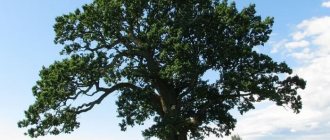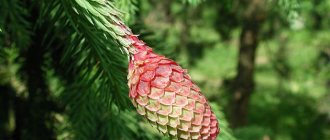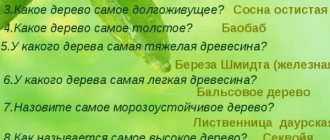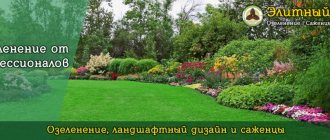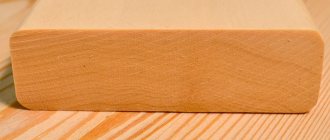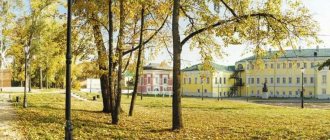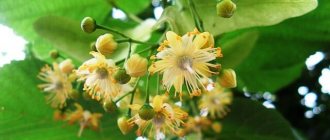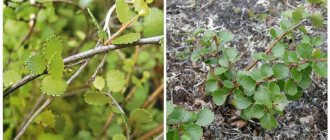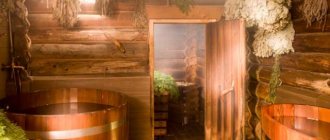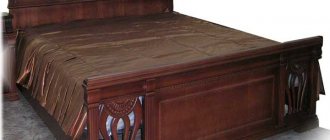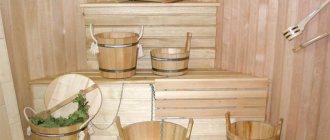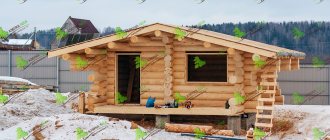- Encyclopedia
- Plants
- Linden
The linden tree is a deciduous tree; the crown is wide, often oval in shape, and its height exceeds 28 meters. In nature, there are over 40 species of these trees; they are long-lived trees, living over 450 years.
The linden tree is extremely unpretentious, grows well in shady areas, is frost-tolerant, has a powerful root, and is well developed. Blooming months for linden are late June, early July. Fragrant linden flowers have many healing properties, so the tree is very loved by people and is protected from destruction, both in our times and many centuries ago.
The wood of the tree has a very soft structure; therefore, it is not used on construction sites, but is used to make kitchen and household utensils: various wooden utensils, ladles, barrels, plywood, toys, crafts, and expensive furniture.
Linden forests exist in nature; they are located in Great Britain, the Alps, Tatarstan, Bashkiria, Chuvashia and other places. In such forests, as a rule, various types of linden are combined. The ideal soil for this tree is species that are rich in large amounts of humus. After all, it is thanks to fallen and rotted leaves that mineral salts, which are vital for linden, enter the soil. In autumn, the roots of the tree replenish their supply of minerals and organic substances, depleted over the summer. In linden forests there is a greater number of earthworms than in other forests, because when the leaves decompose, food is formed for them. And a large number of worms is an indicator of good soil condition. The area of linden forests is much smaller in extent than other forests.
In Greece, linden is called “the bees’ favorite tree,” because linden is a very healing and tasty honey plant. During its flowering, one linden tree produces as much honey as a field of buckwheat.
Linden is highly valued in folk medicine, cosmetology, and many medications are made with its composition. Linden decoction helps against many ailments: viral diseases, colds, insomnia, nervous excitability, as well as diseases of the stomach and intestines. Compresses and lotions with linden infusion are used to treat burns, wounds, as well as to completely get rid of various types of ulcers and acne. In cosmetology, linden blossom is used to make various body lotions, creams, masks, and bath foam.
Option 2
Linden is a voluminous and tall tree, often found in city parks and squares, like birches, maples and poplars. It is unpretentious, which is why it is so common; it has a thick crown that provides shade and coolness on a hot day.
Linden is often called the green beauty. Alleys and hedges look very beautiful from it.
In Russia, this tree grows in all territories except the northern regions. There are varieties that have become familiar in the Far East and Southern Siberia.
Linden is considered a long-lived tree - it lives about 600 years, some trees can live up to 1200 years.
The Linden tree has about 50 varieties.
There are two common types of linden in Europe: small-leaved and flat-leaved. The leaves of small-leaved linden have a bluish tint on the inside with light brown hairs. Flat-leaved - produces leaves in early spring and do not have a blue tint.
In the central part of Russia, in the Caucasus, in the Crimea, a felt (or silver) variety of linden is found. It has large leaves that resemble felt material. This tree grows up to 35-40 meters tall and has a pyramidal crown.
Linden is common in North America, Europe, and Asia.
When this tree blooms, forests, squares, parks, alleys are filled with a sweet aroma, with a honey flavor, and the buzzing of bees can be heard all around.
Linden flowers, as well as bark and buds, are valued for their medicinal properties and are used in folk medicine. The benefits of this tree are invaluable, even with a developed pharmaceutical industry, it is used for the treatment and prevention of various diseases. The flowers are collected and dried and added to tea during colds to strengthen the immune system.
Brooms for the Russian bath are made from the branches of this tree. The bark is used to make dishes and washcloths.
Linden wood is very valuable. It is used to make musical instruments, furniture, and is often used in carvings, as it cuts well and has a pure white color.
Linden honey is one of the best varieties of honey, rich in beneficial properties, and it is also very tasty and aromatic. Honey is transparent, light yellow in color.
Linden is a unique plant that is beautiful and useful at the same time.
2, 3, 4, 5 grade the world around us
Methods of propagation of linden
Propagation by seeds
When planting a linden tree by seed, it is very important to meet certain conditions.
- For example, before a seed is planted, it must first be kept in humid conditions at zero temperature. This needs to be done within three to six months, it all depends on the type of plant. This is done mainly in wet sand or sawdust.
- After this, the seed is planted in the soil without drying.
- Sow linden seeds in rows, maintaining intervals of twenty centimeters.
- The sown seeds are lightly sprinkled with soil on top.
- Plant them in moist soil.
- Since linden does not like frost, the seeds should be covered with film, but so that the air under it is ventilated.
Propagation by seedlings
You can propagate the plant using seedlings; they grow under large trees.
It is worth choosing small seedlings without true leaves; they best tolerate transplantation to another place.
It is best to dig them up in the spring, when leaves begin to appear on mature trees.
Attention! Seedlings require regular watering, especially during dry periods.
Next year in the fall, the seedlings can be transplanted to a permanent location.
Propagation by cuttings
Planting a tree using cuttings is rarely used. The cuttings take root very poorly.
If you use this method, then only use green, non-lignified shoots.
Before planting, the cuttings should be placed in a solution to stimulate the formation of the root system, and then planted in enriched soil.
Interesting answers
- Story
- Important scientific discoveries of the 20th century - message report (world around us, grade 4, grade 9)
Man has always strived to improve his life, invent something new, and explore the unknown. And the 20th century is rightfully considered the richest in scientific discoveries and achievements - Report about the common hedgehog (message)
The hedgehog is considered a predatory animal. It has a fairly small body size. Lives mainly in mixed and deciduous forests. May also live in the steppe - Writer Alexandre Dumas.
Life and work Alexandre Dumas is one of the most famous French writers of the early 19th century, the creator of many cult novels and plays. - Report on the topic Earthquakes, message 5, 6 grades
An earthquake is vibrations of the earth's crust of varying power. About 1 million weak and about 2 thousand strong earthquakes are recorded annually. A powerful earthquake can cause severe destruction.
Fruits and seeds
You should continue your report on linden with a description of its period of flowering and fruit ripening. It looks like a nut, with leathery pericarps. From the very beginning, the skin on them is very light in color. As it ripens, it darkens greatly.
A ripe nut remains on the branches even after the leaves have fallen . It has a bracted leaf, similar to a sail, and inside there are seeds, in the amount of 1 or 2 pieces. In winter, the wind picks a nut with seeds from a branch and it flies as far as possible from the mother tree and germinates there.
Seeds must be frozen. Without cold hardening, they simply will not germinate.
They sprout only after a year. Under natural conditions they retain germination better than at home. Squirrels and chipmunks greatly help with seed germination and distribution. They take them to their storerooms, and there the nuts sprout.
Description and types
In Europe and Asia, the diversity of species is not so widely represented. This family prefers warm climates and areas with high humidity. Widely distributed in Transcaucasia and the Far East of Primorsky Krai. In Asia it is found only in the northern regions, far from the oceans.
This deciduous tree always has:
It grows up to 45 meters in height. Young individuals have very smooth bark, without roughness.
The most common type of linden family is the small-leaved linden. Its branches grow in pairs, with the top ones going up, the side branches branching to the sides, and the bottom ones going down. Thus, the branches form the shape of a tent. The leaves of the variety are small, heart-shaped and have sharp tips. The top side is smooth to the touch, and the bottom is rough. Flowering time is June. Flowers are collected in lush inflorescences of 5-8 flowers. At the end of summer, fruits appear in their place in the form of small nuts.
Also very famous is the broadleaf linden . This species is found mainly in the Caucasus and southern Europe, as it does not tolerate severe frosts. Linden trees of this type are mostly long-lived and grow into very large specimens: up to 40 meters in height, with a trunk diameter of up to 1 meter. The leaves are very large and jagged along the edges. The crown is shaped like a pyramid. The flowering period begins in mid-June and lasts only 2 weeks. Only 2-4 flowers are collected in inflorescences.
Common linden appeared in nature by crossing small-leaved and broad-leaved varieties. Its leaves are dark green in color. Smooth to the touch. They have the shape of a heart. Covered with so much sticky and fragrant juice that it flows and drips to the ground. This is very attractive to bees. It is this variety that is the best honey plant when the linden begins to bloom.
In the natural environment, the first flowers bloom only 20 years after germination . In artificial plantings - only after 30 years. This occurs during the hottest months of summer: June-July. At this time, the honey smell of blooming flowers spreads everywhere, which attracts bees. They collect up to 30 kg of honey from one tree. Then the time for collecting linden blossoms begins.
Linden description:
The linden tree can reach a height of up to 30 meters. The crown of the tree is wide and oval. The trunk is straight and strong. The root system is quite powerful. The leaves are shaped like a heart. On the outside the leaf has a more saturated green color, and on the other side the leaf is lighter. The edges of the leaf are jagged. When the leaves bloom, there are stipules that fall off quite quickly. And nectar glands may very often be present at the base of the leaf.
Report about linden - description, signs and characteristics
Linden is a genus of woody plants that is part of the Linden family. Unites more than 45 species of trees and shrubs, as well as about 100 hybrids. Representatives of the genus grow in subtropical and temperate zones in the northern hemispheres. It is especially common in the south of East Asia and North America, so during environmental lessons, schoolchildren write reports, stories and messages about the linden tree.
Benefits of linden
I would like to continue the message about linden with a description of the benefits of this medicinal plant. The benefits of this fragrant honey plant have been known for a very long time. This is a tree that literally uses everything.
Wood of this family is highly valued in production:
- plywood;
- various crafts;
- toys;
- kitchen utensils.
It is very soft, pliable and does not warp, so it is used for making musical instruments.
Vat and barrels are hollowed out from huge trunks. In the old days, bast was made from it and bast shoes were woven. Also used by fraudsters, due to its softness and white color, to counterfeit royal seals. This is where the name “linden seal” comes from.
A decoction is made from the bark . This produces mucus, which is used for severe inflammation and burns. The leaves contain a lot of calcium, which fertilizes the soil around the tree well. Fallen leaves quickly rot, turning into good fertilizer, so there is always a fertile layer of soil rich in calcium under the honey plant. Young leaves are also used in salads. Dried leaves are used in baking.
The linden tree is the best honey plant
The linden tree blooms late, in July (the large-leaved one is two weeks earlier than the small-leaved one), with yellowish flowers collected in 5-8 pieces in umbrella inflorescences. Linden flowers secrete a lot of pleasantly smelling nectar (in large-leaved linden up to 2.5 mg per day), which bees tirelessly collect. Therefore, the linden tree is considered an excellent honey plant, and linden honey is the best and most healing. The fruits of the linden tree are smooth nuts 4-6 millimeters in size, with a bract. They fall from the tree and are carried by the wind throughout the area all winter, and the leaf is a kind of sail. However, once on the ground, linden fruits never germinate in the first year, as they require a long cooling period to germinate. This is such a strange linden tree - it cannot develop normally without cold.
Features of reproduction
Reproduction is very easy using root shoots. They are carefully bent to the ground, a shallow hole is dug, the layer is secured with fasteners and sprinkled with earth in the middle of the shoot. The top of the layering is tied to a support. Water regularly and abundantly. When rooting, they are cut off from the mother tree and transplanted where required.
When replanting, the hole is made exactly the size of the root. Drainage in the form of crushed stone, pebbles or expanded clay must be laid at its bottom . Compost mixed with phosphate is placed on top of it. Linden loves soil mixed with turf, humus and sand, so they make just such a mixture and cover the roots. The root collar should be on the surface of the ground when planting. After transplanting, water thoroughly.
Abstract on the topic Linden cordate
Tilia cordata (L.) Mill.
The name comes from the Latinized Greek “tileia” - linden, Latin cordatue - heart-shaped, which is associated with the shape of the leaves.
Large trees up to 30 m high with a spreading crown and powerful trunks, with dark, almost black, deeply fissured bark; young branches are red-brown, usually glabrous. Leaves are alternate, long-petiolate, heart-shaped, blades 5-10 cm long, dark green, glabrous, serrated above, with a long-pointed apex, usually symmetrical, less often unequal, the width is almost the same as the length, the leaves below are bluish-green, with tufts yellowish-brown hairs at the vein nodes. The flowers are yellowish-white, fragrant, 10 mm in diameter, collected in 3-15 pieces in half-umbrellas. Each inflorescence contains a pale yellowish-green elongated-lanceolate thin bract leaf, about 6 cm long, fused with the peduncle up to half its length. The fruit is a nut, 4-8 mm in diameter, spherical, tomentose-pubescent, with a woody or leathery shell, brown; seeds are broadly obovate, 4-5 mm long, shiny, red-brown. Blooms in late June - July. Flowering lasts about two weeks, the fruits ripen in August - September.
Distributed in the mixed forest zone of central European Russia, in Ukraine, in the western foothills of the Urals, in Western Siberia, Moldova, Bashkiria, Crimea, and the Caucasus.
In medicine, linden inflorescences are used together with a bract - the fly. The collection is timed to coincide with the phase when most of the flowers have bloomed, and the rest are in buds. Dry the raw materials in attics under an iron roof or under sheds with good ventilation, spreading them in a thin layer (3-5 cm) on fabric or paper, or in a dryer at a temperature of 25-30°C. Drying in the sun cannot be done. The shelf life of raw materials is 2 years.
Linden flowers contain essential oil - up to 0.05%, which includes alcohol farnesol, glycosides - hesperidin and tiliacin, flavonoid glycosides quercetin and kaempferol, tannins, saponins, vitamin C, carotene, mucus.
Linden leaves contain a lot of protein, vitamin C and carotene. The fruit contains about 60% fatty oil.
The triterpene compound tiliadin and up to 8% oil were found in the bark. Linden flowers, or “linden blossom,” are used in medicine in the form of infusion and decoction. Linden preparations are used as a diaphoretic (the glycoside tiliacin acts as a diaphoretic) and antipyretic for colds, gastritis, and also for rinsing the mouth and throat as a bactericidal agent. The healing properties of linden are associated with quercetin and kaempferol. Tiliacin has phytoncidal (bactericidal) activity.
Linden flowers are widely used in folk medicine in various countries as a strong diaphoretic, diuretic, anticonvulsant, anti-inflammatory and analgesic.
The “linden blossom” infusion is recommended for colds, headaches, fainting, for gargling with sore throats and the mouth during inflammatory processes.
To prepare the infusion, take 2 tablespoons of crushed linden flowers per 400 ml of boiling water and leave for 20-30 minutes.
The decoction is prepared at the rate of 3-4 tablespoons of crushed flowers per 400 ml of water, boiled for 10 minutes, filtered.
Linden flowers have long been used in the form of hot tea as a diaphoretic, drunk hot at night (brew a tablespoon of flowers in 200 ml of boiling water). The pulp of brewed flowers is used as an emollient for poultices.
Linden wood charcoal is used for flatulence and diarrhea.
Crushed fresh buds and leaves are used as an external anti-inflammatory, analgesic and emollient applied to burns and ulcers.
Linden seed powder is used to stop nosebleeds.
Boiled young bark is suitable for the treatment of burns, rheumatism, gout, etc.
***
Description of the plant. Linden cordate is a tree of the linden family up to 30 m high with dark longitudinally furrowed bark (on old trees). Young branches are reddish-brown with small lentils. The leaves are alternate with early falling stipules, long-petiolate, sometimes asymmetrical, with a heart-shaped base and an elongated-pointed apex, serrated, green above, glabrous, glaucous below, often pubescent, with beards of red hairs at the corners of the veins, 5-9 cm long and 5 cm wide. -8 cm, on sterile and coppice shoots they are often larger (length and width up to 15 cm). The flowers are yellowish-white, fragrant, about 1 cm in diameter, collected in 3-11 inflorescences. The fruit is a spherical one-two-seeded nut. Linden lives up to 300-400 years (sometimes up to 600). Blooms in June - July. The fruits ripen in August–September.
Flowers with bracts are used in medicine.
Habitats. Spreading. The cordate linden grows in the middle and southern part of the European territory of the country, including Crimea, the Middle and Southern Urals. It enters Western Siberia in a small wedge to the right bank of the lower reaches of the Irtysh.
The main areas of distribution of the cordate linden are in the zone of broad-leaved forests. It is one of the forest-forming species of broad-leaved and coniferous-deciduous forests, but is almost always found in a mixture with other species, especially oak. Pure linden forests are abundantly represented only in the Southern Cis-Urals. Often, especially in the north of the range, linden grows in the undergrowth. Typically serves as an indicator of rich soils; can tolerate temporary excess moisture, but does not tolerate waterlogging. Very shade tolerant.
Linden has a variety of uses. It is advisable to cut linden trees at the age of about 90 years: although at this age the annual growth of wood and bast is somewhat reduced, it provides the opportunity to obtain the maximum amount of raw materials for medicine and increases the base for the development of beekeeping.
Procurement and quality of raw materials. In order to protect linden forests, it is advisable to collect linden flowers mainly from trees intended for felling. Main and intermediate felling in linden forests should be planned for the period of linden flowering.
The best time for collection is considered to be the time when more than half of the flowers in the inflorescence have bloomed, and the rest are in the budding phase. Flowers should be collected only in dry weather, during the daytime, to avoid dew. The collected flowers are dried in dryers at a temperature not exceeding 40-45 ° C. Drying can also be carried out in the shade, in ventilated areas. Well-dried raw materials should have yellow-green bracts and pale yellow flowers, a faint odor, a mucus-sweet, slightly astringent taste. The humidity of raw materials is allowed no higher than 12%. Raw materials are packaged in bales and stored in a semi-dark, well-ventilated area. When properly stored, raw materials do not lose their properties for 3 years. From 100 kg of raw flowers with bracts after drying, up to 30 kg of dry raw materials are obtained.
Chemical composition. Linden flowers contain essential oil, hesperidin, tiliacin, saponins, tannins, carotene and ascorbic acid. Farnesol was found in the essential oil.
Application in medicine. “Linden blossom” is part of a diaphoretic tea, a collection for gargling. An infusion of linden flowers is used as a diaphoretic for colds and as a bactericidal mouth rinse. It also has a diuretic and expectorant effect.
Infusion. Take 2 tablespoons of crushed flowers in 2 cups of boiling water, leave for 15-20 minutes.
